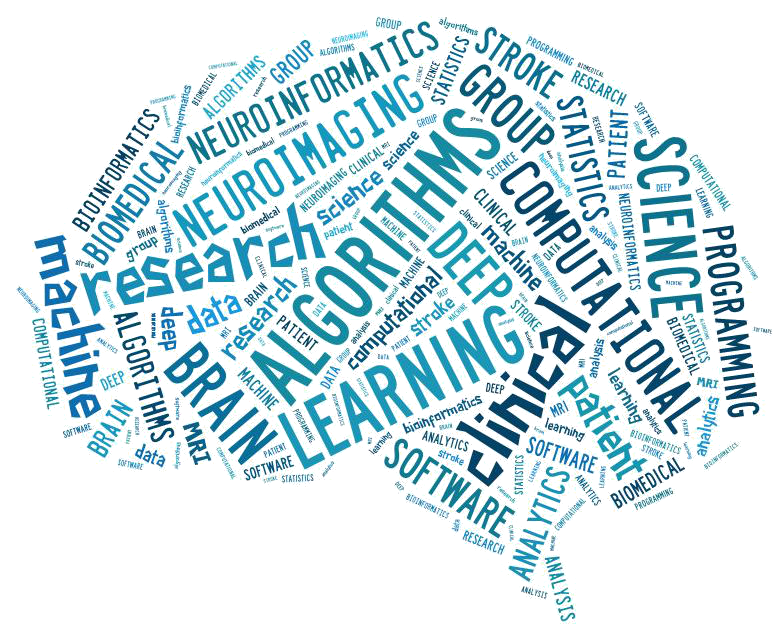Gottrup C, Thomsen K, Locht P, Wu O, Sorensen GA, Koroshetz WJ, Østergaard L.
Applying instance-based techniques to prediction of final outcome in acute stroke. Artif Intell Med 2005;33(3):223-36.
AbstractOBJECTIVE: Acute cerebral stroke is a frequent cause of death and the major cause of adult neurological disability in the western world. Thrombolysis is the only established treatment of ischemic stroke; however, its use carries a substantial risk of symptomatic intracerebral hemorrhage. A clinical tool to guide the use of thrombolysis would be very valuable. One of the major goals of such a tool would be the identification of potentially salvageable tissue. This requires an accurate prediction of the extent of infarction if untreated. In this study, we investigate the applicability of highly flexible instance-based (IB) methods for such predictions.
METHODS AND MATERIALS: Based on information obtained from magnetic resonance imaging of 14 patients with acute stroke, we explored three different implementations of the IB method: k-NN, Gaussian weighted, and constant radius search classification. Receiver operating characteristics analysis, in particular area under the curve (AUC), was used as performance measure.
RESULTS: We found no significant difference (P = 0.48) in performance for the optimal k-NN (k = 164, AUC = 0.814 +/- 0.001) and Gaussian weight (sigma = 0.17, AUC = 0.813 +/- 0.001) implementations, while they were both significantly better (P < 1 x 10(-6) for both) than the constant radius implementation (R = 0.28, AUC = 0.809 +/- 0.001). Qualitative analyses of the distribution of instances in the feature space indicated that non-infarcted instances tends to cluster together while infarcted instances are more dispersed, and that there may not exist a stringent boundary separating infarcted from non-infarcted instances.
CONCLUSIONS: This study shows that IB methods can be used, and may be advantageous, for predicting final infarct in patients with acute stroke, but further work must be done to make them clinically applicable.
Hjort N, Christensen S, Sølling C, Ashkanian M, Wu O, Røhl L, Gyldensted C, Andersen G, Østergaard L.
Ischemic injury detected by diffusion imaging 11 minutes after stroke. Ann Neurol 2005;58(3):462-5.
AbstractA 78-year-old woman suffered a stroke inside a magnetic resonance scanner while being imaged because of a brief transient ischemic attack 2 hours earlier. Diffusion-weighted images obtained 11 minutes after stroke showed tissue injury not found on initial images. The data show early, abrupt diffusion changes in hypoperfused tissue, adding to our understanding of the progression of microstructural abnormalities in the hyperacute phase of stroke.
Ay H, Koroshetz WJ, Benner T, Vangel MG, Wu O, Schwamm LH, Sorensen GA.
Transient ischemic attack with infarction: a unique syndrome?. Ann Neurol 2005;57(5):679-86.
AbstractIt is debated whether transient symptoms associated with infarction (TSI) are best considered a minor ischemic stroke, a subtype of transient ischemic attack (TIA), or a separate ischemic brain syndrome. We studied clinical and imaging features to establish similarities and differences among ischemic stroke, TIA without infarction, and TSI. Eighty-seven consecutive patients with TIA and 74 patients with ischemic stroke were studied. All underwent diffusion-weighted imaging on admission. Symptom duration and infarct volume were determined in each group. Thirty-six patients (41.3%) with TIA had acute infarct(s). Although TIA-related infarcts were smaller than those associated with ischemic stroke (mean, 0.7 vs 27.3 ml; p < 0.001), there was no lesion size threshold that distinguished ischemic stroke from TSI. In contrast, the symptom duration probability density curve was not broad, but instead peaked early with only a few patients having symptoms for longer than 200 minutes. The probability density function for symptom duration was similar between TIA with or without infarction. The in-hospital recurrent ischemic stroke and TIA rate was 19.4% in patients with TSI and 1.3% in those with ischemic stroke. TIA with infarction appears to have unique features separate from TIA without infarction and ischemic stroke. We propose identifying TSI as a separate clinical syndrome with distinct prognostic features.
Wu O, Ostergaard L, Sorensen GA.
Technical aspects of perfusion-weighted imaging. Neuroimaging Clin N Am 2005;15(3):623-37, xi.
AbstractThere is increasing interest in using diffusion-weighted (DWI) MR imaging and perfusion-weighted MR imaging (PWI) to assist clinical decision-making in the management of acute stroke patients. Larger PWI than DWI lesions have been speculated to represent potentially salvageable tissue that is at risk of infarction unless nutritive flow is restored and presence of these mismatches have been proposed as inclusion criteria for identifying patients most likely to benefit from therapeutic intervention. Understanding the technical aspects of PWI may improve comprehension of the capabilities and limitations of this technique.

